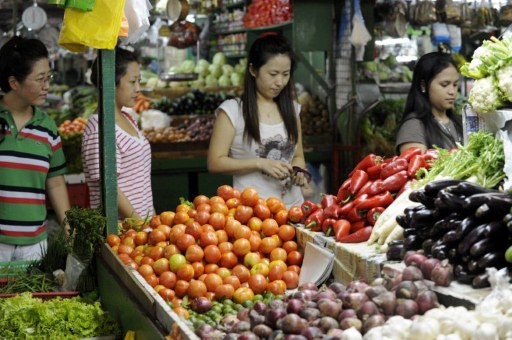January inflation hits fastest in 2 years

The increase in consumer prices accelerated in January to its fastest pace in two years due to a weakening peso and the spillover effects of last year’s natural calamity on supply of goods. AFP FILE PHOTO
MANILA, Philippines—The increase in consumer prices accelerated in January to its fastest pace in two years due to a weakening peso and the spillover effects of last year’s natural calamity on supply of goods.
The Philippine Statistical Authority (PSA) reported Wednesday that the annual inflation rate hit 4.2 percent in the first month of the year, the fastest pace since January 2012.
The commodity group composed of food and non-alcoholic beverages registered the highest inflation rate of 5.5 percent, rising from 4.8 percent in December.
Other commodity groups that recorded faster inflation rates in January compared with the price movements in December were clothing and footwear (3.4 percent from 3.1 percent); furnishing, household and maintenance equipment (2.6 percent from 2.4 percent), and health products (3.2 percent from 2.9 percent).
Consumer prices jumped in the first month of the year as some parts of central Philippines were still in the process of recovery from the devastation caused by Super Typhoon Yolanda, which ravaged the Visayas in November last year.
The natural disaster disrupted some businesses and destroyed farm lands, thus affecting supply and causing job displacements.
Socioeconomic Planning Secretary Arsenio Balisacan, however, said the acceleration of inflation in January was unlikely to be sustained.
“[Average] inflation this year can stay within the target. The recent uptick in food prices was due mainly to supply chain disruptions arising from natural disasters. We expect prices to stabilize in the coming months,” he said in a text message.
The acceleration of inflation also came as the peso reeled from the flight of foreign portfolio capital out of emerging markets like the Philippines. After ending 2013 in the 44-to-a-dollar territory, the peso weakened past 45 in January as portfolio fund owners dumped emerging-market assets in favor of dollar-denominated securities.
The depreciation of the peso and other emerging-market currencies was attributed to the tapering by the US Federal Reserve of its stimulus program for the American economy.
The Fed had cut the amount of its monthly bond purchases by $10 billion to $75 billion in January. This was followed by another $10-billion cut announced last week.
Foreign-exchange traders said the tapering, an offshoot of what is believed to be an improving US economy, has made the American currency and dollar-denominated assets more attractive.
